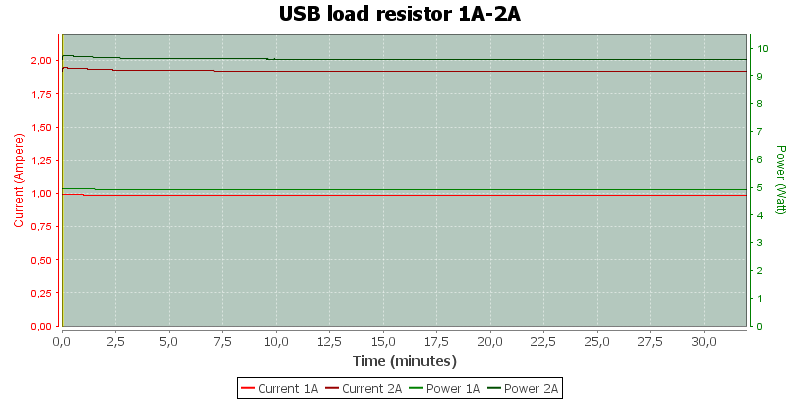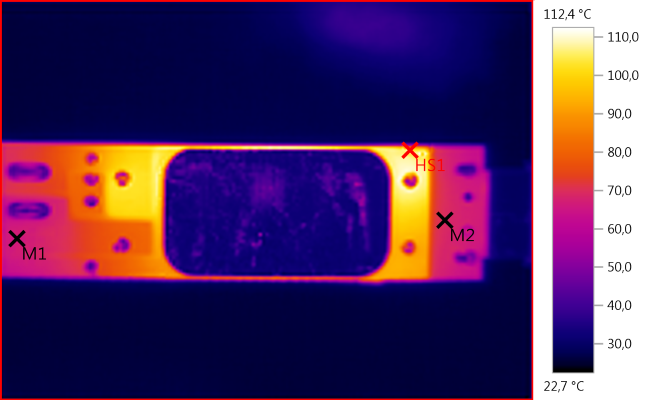USB Load resistor 1A-2A

Official specifications:
-
Color: Green.
-
Resistance: 1A, 2A
-
Size: approx. 80 *18*11mm
-
when the switch adjust to 1A, the green LED light (There is no green led or dual color led)
-
when the switch adjust to 2A, the red LED light
I bought from ebay dealer: finetech007
The most interesting detail about this type of load is how hot they get, some power resistor has a working temperature between 200°C and 300°C when fully loaded.

This type of load is very simple, two big power resistors, one permanently connected, the other controlled by the switch and a led to show if there is any power supplied to it.






Load testing
-
This type of load is only designed for 5V input.
-
Current change during 30 minutes with 1A load is 0.013A, i.e. 1.3%
-
Current change during 30 minutes with 2A load is 0.029A, i.e. 1.5%

Being a resistor the current will depend on voltage.

As expected the load current and power is stable with a resistor, except for a small drop due to temperature.

M1: 74,2°C, M2: 99,2°C, M3: 70,8°C, HS1: 213,5°C
One resistor gets fairly hot.

M1: 66,0°C, M2: 69,3°C, HS1: 112,4°C
The tinned area on the back will equalize the temperature, but do not really radiate any heat.

M1: 255,9°C, M2: 253,5°C, M3: 139,1°C, M4: 115,7°C, HS1: 275,6°C
Two power resistor this close will heat each other and gets very hot.
The correct way to mount power resistors is a bit above the board with some distance between. These resistors are only running at half their rated power, but they cannot get rid of the heat.

M1: 100,3°C, M2: 101,7°C, HS1: 160,1°C
Again the radiation from the backside is limited.
Conclusion
The load works as expected and is an easy way to test usb power banks (together with a usb meter), but this model really need an external fan to supply lots of cool air.
It is a very bad idea to touch it when it is working.
Notes
Expect very similar performance from all resistive loads with two round green 10W 5ohm resistors.
